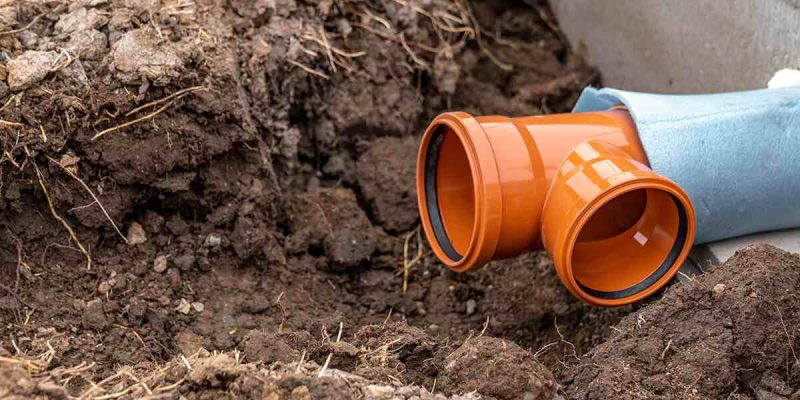
Sewer line replacement is one of those home repairs that can seem like a huge ordeal. Not only are you dealing with the inconvenience of having your yard dug up, but there’s also the question of how long it will take to get everything back to normal. If you’re facing a sewer line replacement, understanding the timeline of the process can help you plan accordingly. In this article, we’ll walk you through the steps involved in sewer line replacement and give you an idea of how long each part of the process takes.
Before diving into the details, it’s important to understand that the length of time for sewer line replacement can vary depending on a number of factors. These include the condition of your existing pipes, the type of material used for replacement, and how difficult the terrain is. If you want to get a clearer idea of the costs involved, check out this detailed guide on sewer line repair cost, which provides an in-depth look at what to expect.
Step 1: Initial Inspection and Assessment (1–2 Hours)
The first step in any sewer line replacement is the inspection and assessment phase. A professional plumber will come to your home and conduct an inspection of your current sewer line. This typically involves using a camera to inspect the inside of your pipes and determine the extent of the damage. Depending on the size of your property and the layout of your plumbing system, this process usually takes between one to two hours.
During the inspection, the plumber will be able to pinpoint the problem areas and discuss the best course of action. If the pipes are severely damaged, they may recommend a full replacement, whereas if the damage is minor, repairs might be an option.
Step 2: Permit and Planning (1–2 Weeks)
Once the plumber has assessed the condition of your sewer line, the next step is to secure the necessary permits. In many areas, replacing a sewer line requires a permit from your local government. The time it takes to secure the permit will vary depending on your location. In general, this phase can take anywhere from a few days to two weeks. Some municipalities may require inspections during the planning phase, which could add additional time to the process.
During this period, the plumber will also begin planning for the excavation, including determining the best method for replacement. This is the time to ask any final questions about the project and get confirmation on the estimated timeline.
Step 3: Excavation and Sewer Line Removal (1–3 Days)
Excavation is often the most time-consuming part of the sewer line replacement process. The length of time it takes to dig up your old sewer line will depend on a few key factors:
- Location of the Sewer Line: If the line is under a driveway, patio, or landscaping, excavation can take longer and may require more effort.
- Size of the Job: Larger homes with long sewer lines or more complicated layouts will require more digging.
Typically, excavation takes anywhere from one to three days. The plumbers will need to carefully remove the old sewer pipes, which may involve digging trenches along the line’s path to access the pipes. Depending on how deep the pipes are buried and how easy they are to access, this step can take longer.
During this time, you may experience some disruptions, such as a temporary lack of water or sewer service. Be sure to ask your plumber how to prepare for these disruptions.
Step 4: Sewer Line Replacement and Installation (1–2 Days)
After the old sewer line has been removed, the next step is to install the new pipes. The installation process generally takes one to two days, depending on the complexity of the project and the type of material used for the new sewer line.
Today, many homeowners opt for newer materials like PVC or HDPE, which are durable, cost-effective, and relatively easy to install. The plumber will lay down the new sewer line and make sure it is securely connected to your home’s plumbing system and the municipal sewer system. If there are any fittings or special requirements, this may add extra time to the installation process.
Step 5: Backfilling and Restoration (1–2 Days)
Once the new sewer line is in place, the next step is backfilling and restoring the yard. The plumber will fill in the trenches and ensure the ground is properly compacted. If your landscaping, driveway, or other areas were disturbed during the excavation, this process can take a little longer to restore everything back to its original condition.
If your yard was landscaped, expect some replanting or reseeding to take place, which can add to the timeline. Depending on how extensive the restoration is, this phase can take one to two days.
Step 6: Final Inspection and Testing (1–2 Hours)
After the new sewer line is installed and the area is backfilled, the plumber will conduct a final inspection and testing. This ensures that the new sewer line is functioning properly and that there are no leaks or other issues. A camera may be used again to check the inside of the pipes, making sure everything is in working order.
This inspection typically takes one to two hours and may include a final walkthrough with the homeowner to make sure you’re satisfied with the work.
Total Timeline for Sewer Line Replacement
In total, you can expect the sewer line replacement process to take anywhere from 5 to 10 days, with some projects stretching out to two weeks or more, depending on the complexity of the job and local permit processes. It’s important to communicate with your plumber throughout the process to get a more accurate timeline for your specific situation.
Final Thoughts
Sewer line replacement may seem like a daunting task, but with the right planning and preparation, it doesn’t have to be. By understanding the timeline and steps involved, you can better prepare yourself for the disruptions and costs associated with this necessary home improvement. While it can take several days to replace a sewer line, the peace of mind that comes with knowing your plumbing system is in top shape is well worth the effort.
Be sure to work with a licensed plumber who has experience with sewer line replacement, especially if your home has older plumbing. The right professional will not only get the job done quickly but will also ensure the new system lasts for years to come.
If you need more detailed information on sewer line replacement or the associated sewer line repair cost, don’t hesitate to consult with your local plumber or refer to trusted resources to get the full picture.








